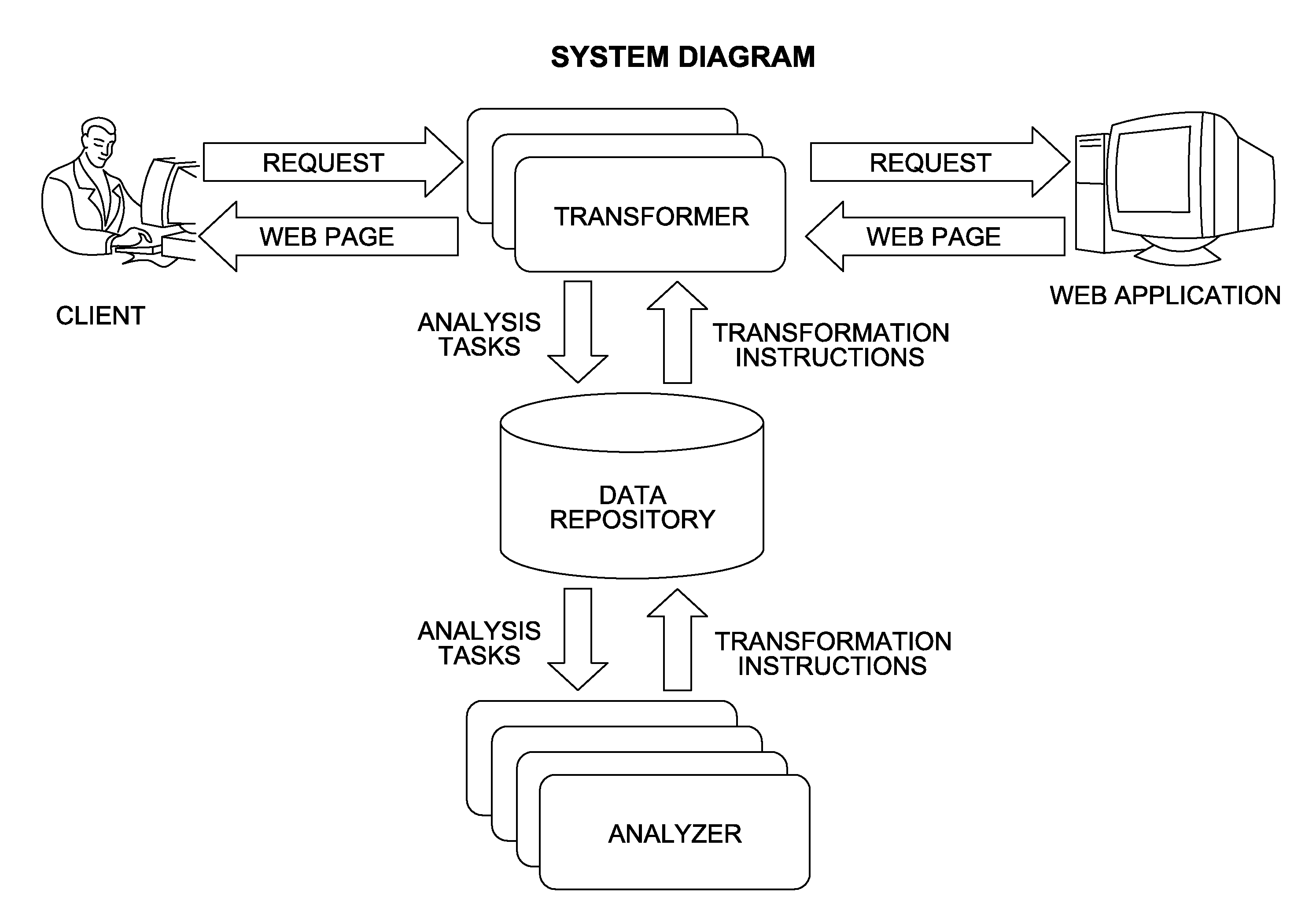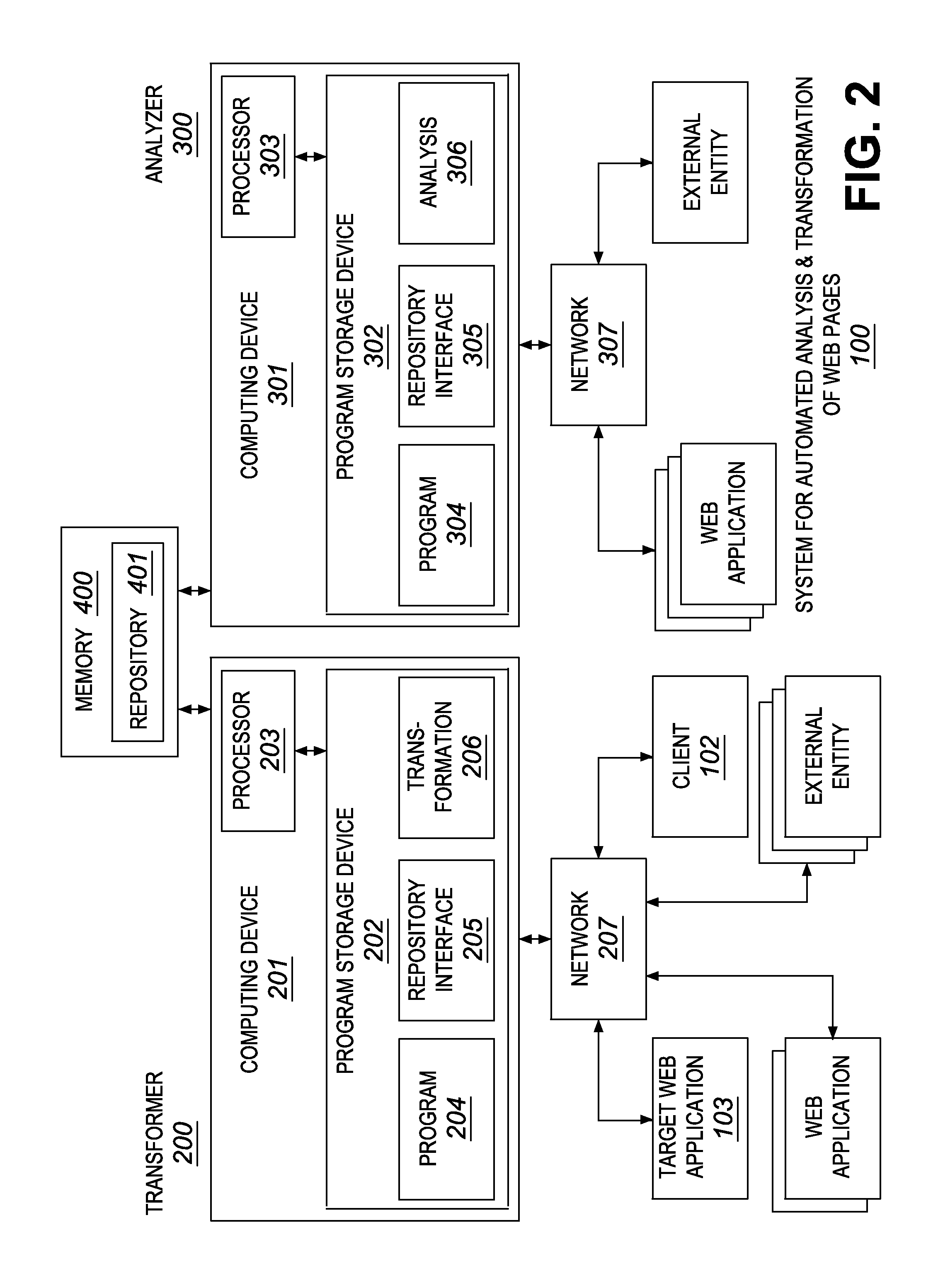Method and system for automated analysis and transformation of web pages
a technology of automatic analysis and transformation, applied in the field of methods and systems for modifying web pages, can solve the problems of complex web pages, risking the integrity of software, and changing web pages, especially those that are automatically generated,
- Summary
- Abstract
- Description
- Claims
- Application Information
AI Technical Summary
Benefits of technology
Problems solved by technology
Method used
Image
Examples
example — merging
Example—Merging CSS files
[0087]As mentioned above, merging multiple CSS files referenced by a page can improve the page's loading speed. Here is a full flow or sequence of performing such a CSS merge on the web page described below and referred to as “The Page” in this sequence:[0088]1. Transformer intercepts the first request to The Page[0089]a. Discovers there are no transformation instructions[0090]b. Creates an analysis Task for The Page in the Repository[0091]c. Returns The Page unmodified (with both CSS files referenced)[0092]2. Analyzer receives the Analysis Task of analyzing The Page[0093]d. Analyzes the page, discovering both the static and dynamic CSS merges[0094]e. Creates a combined file, called “combined.css”, holding the content of both “main.css” and “menu.3.0.2.css”.[0095]f. Creates a group of 3 Search & Replace Transformation Instructions: 2 for removing the old CSS references and one for adding the new one.[0096]i. Instruction for removing main.css:[0097]Original: ...
PUM
 Login to View More
Login to View More Abstract
Description
Claims
Application Information
 Login to View More
Login to View More - R&D
- Intellectual Property
- Life Sciences
- Materials
- Tech Scout
- Unparalleled Data Quality
- Higher Quality Content
- 60% Fewer Hallucinations
Browse by: Latest US Patents, China's latest patents, Technical Efficacy Thesaurus, Application Domain, Technology Topic, Popular Technical Reports.
© 2025 PatSnap. All rights reserved.Legal|Privacy policy|Modern Slavery Act Transparency Statement|Sitemap|About US| Contact US: help@patsnap.com



